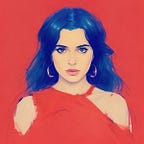Puerto Rico’s “Black Gold”: The Poor Man’s Crop
How a mountain people’s identity became the symbol of Puerto Rican pride and derision.
Jíbaro is a taíno (Puerto Rico’s indigenous) word for “people of the forest.”
Throughout the 20th-century, the word came to denote a particular people — farmers and laborers from the island’s interior mountainous region.
However, mystification surrounding the jíbaro gave way to a trope used by Puerto Rican elites of the 18th and early 19th-centuries. This trope “formed part of the arsenal that this group [privileged class] used to advance a particular socioeconomic and political class project” and oppose the Spanish colonial government. Some elites would go as far as pretending to be jíbaros as a form of protesting the establishment (Carmen L. Torres-Robles).
In 1886, Puerto Rican journalist, Salvador Brau, noted that only 19% of the island’s population lived in the cities. The rest were scattered across the countryside. In his book, Disquisiciones sociológicas, Brau used the word jíbaro to describe the majority (81%) of the island’s population — a population suffering “miseria social”: lack of education and nutrition, abundant in superstition and indolence. While Brau did not blame the jíbaros for their conditions, he did not fail to criticize…
